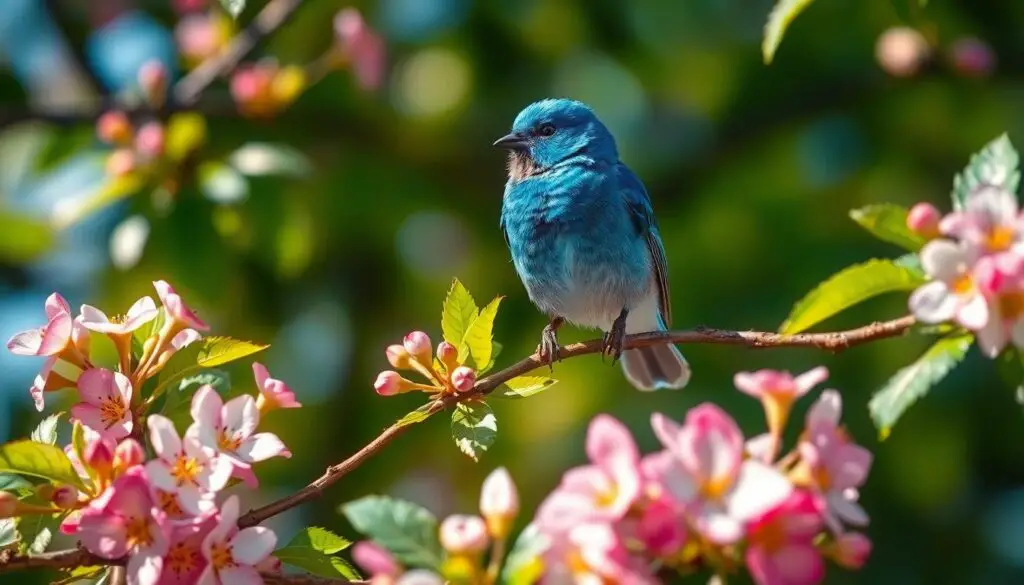Have you ever spotted a bluebird and felt an inexplicable sense of joy? You’re not alone. Throughout history, these vibrant creatures have captured our imagination and hearts, becoming powerful symbols of happiness, hope, and renewal across many cultures.
We’ll explore the rich tapestry of bluebird symbolism, from Native American traditions where they represent prosperity and protection to their significance in modern spiritual practices. Whether appearing in your dreams, crossing your path during difficult times, or simply gracing your backyard, bluebirds carry messages worth understanding.
Join us as we uncover the deeper meaning behind these azure messengers and discover why the sight of a bluebird might be more than just a beautiful encounter—it could be a meaningful sign from the universe specifically for you.
The Bluebird as a Universal Symbol of Joy and Hope
Across cultures and throughout history, bluebirds have emerged as powerful symbols of happiness, optimism, and emotional renewal. Their vibrant blue plumage and cheerful songs create an immediate association with clear skies and the promise of better days ahead. Many traditional stories portray bluebirds as messengers of good news, carriers of spring’s arrival, and harbingers of positive change.
Literature and popular culture frequently feature bluebirds as representations of life’s most cherished emotional states. Classic works like Maurice Maeterlinck’s “The Blue Bird” explicitly connect these creatures with the pursuit of happiness, while countless folk songs celebrate their uplifting presence. The phrase “bluebird of happiness” has entered common language as a metaphor for joy finding its way to someone who has endured difficult times.
Psychological studies suggest that the mere image of a bluebird can trigger positive emotional responses in many individuals. Their distinctive coloration activates associations with tranquility and possibility in the human mind, making them effective symbols for hope even for people without direct cultural connections to bluebird symbolism. Therapists sometimes use bluebird imagery in visualization exercises designed to promote emotional healing and perspective shifts.
Conservation efforts to protect bluebird populations often emphasize their symbolic importance alongside their ecological value. Organizations dedicated to bluebird preservation frequently highlight how these birds represent our collective hope for environmental renewal and balance. Their recovery from population declines in many regions serves as an inspiring narrative about nature’s resilience when humans take positive action.
Spiritual practitioners from various traditions incorporate bluebird symbolism into ceremonies focused on manifesting joy and overcoming obstacles. The appearance of a bluebird during challenging times is widely interpreted as encouragement to maintain faith in positive outcomes. Many meditation practices use bluebird visualization to help practitioners connect with feelings of freedom, possibility, and emotional lightness.
Historical Significance of Bluebird Symbolism
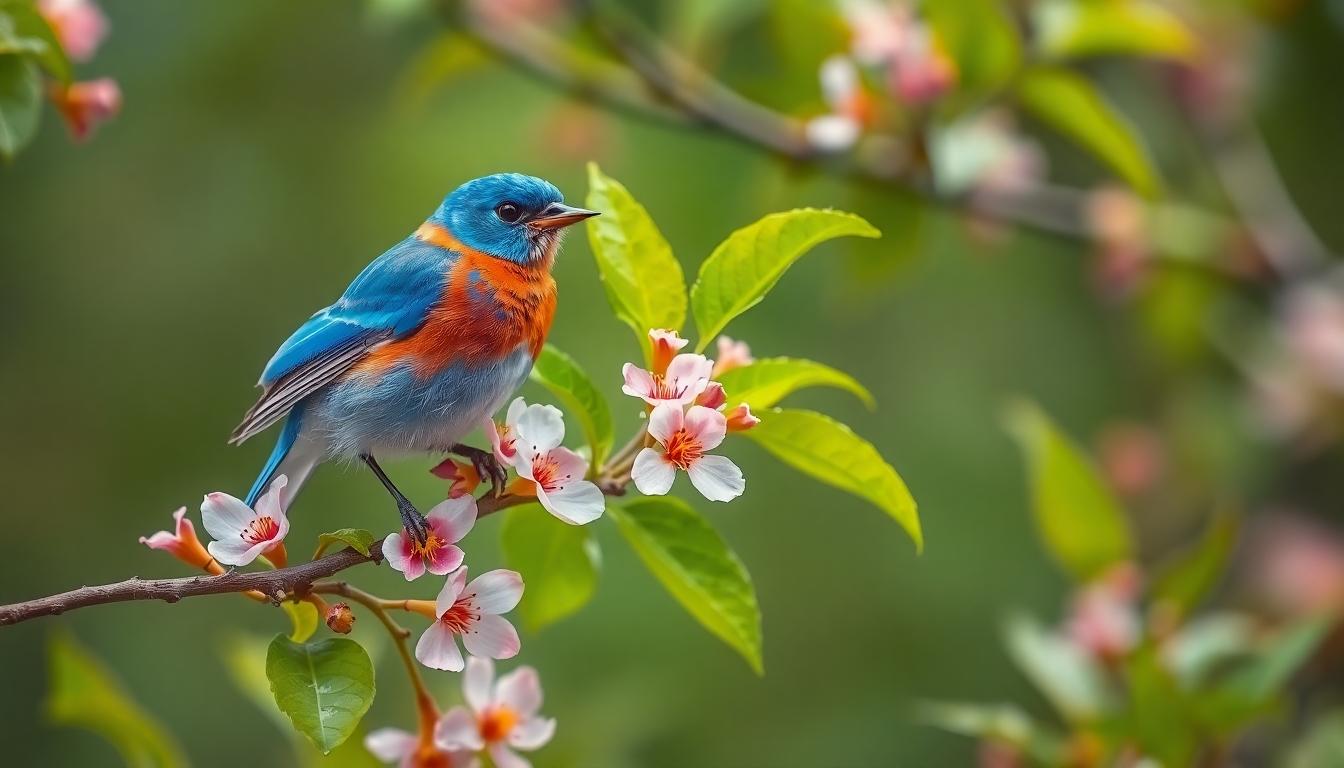
Bluebirds have represented joy and renewal across human history, appearing in ancient cultural traditions and continuing to resonate in modern symbolism. Their distinctive blue plumage and cheerful presence have secured their place in the symbolic language of diverse civilizations, dating back thousands of years.
Bluebird Symbolism in Native American Culture
Iroquois traditions celebrate the bluebird’s song as a powerful herald of spring, driving away winter and the destructive influence of the demigod Tawiscaron. These birds play a central role in Navajo culture, where they’re intrinsically connected to the life-giving warmth of the sun. Many Native American origin stories feature bluebirds as symbols of courage and self-acceptance, exemplified by tales of “ugly birds” transformed by sacred waters—narratives that reflect inner growth and resilience. These stories don’t merely entertain but teach fundamental values about personal transformation and harmony with natural cycles.
Bluebird Representations in European Folklore
European narratives, particularly French fairy tales, position the bluebird as a metaphor for happiness and sacrifice. Maurice Maeterlinck’s influential 1908 play L’Oiseau Bleu cemented the bluebird’s status as a representation of compassion and humanity’s pursuit of happiness. Russian folkloric traditions similarly embrace the bluebird as a symbol of hope and the promise of better days ahead. The bluebird’s recurring appearance in European literature underscores its deep connection to optimism and the human search for meaning. Chinese symbolism from the Shang dynasty depicts the bluebird as a celestial messenger linked to both the sun and concepts of immortality, demonstrating the remarkable consistency of bluebird symbolism across vastly different cultural traditions.
Spiritual Meanings Associated with Bluebirds
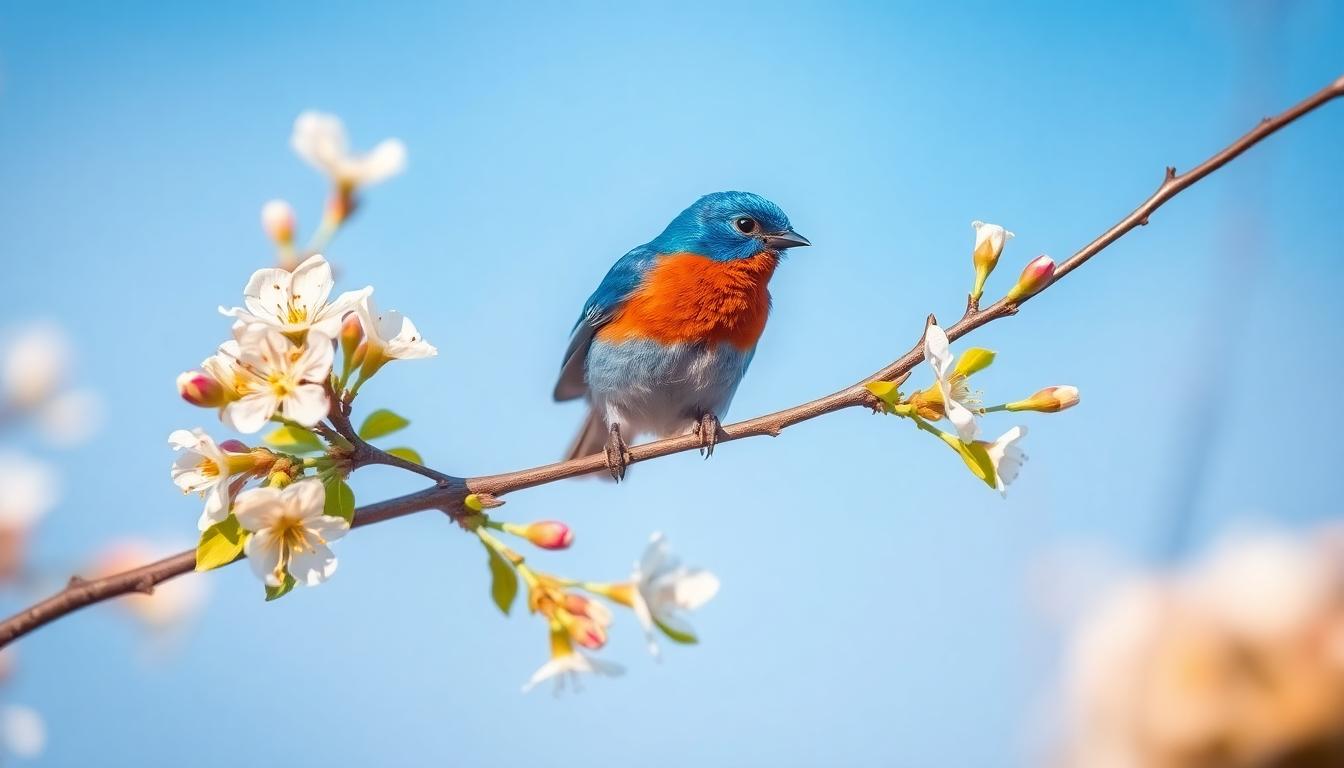
Bluebirds universally symbolize joy, optimism, and renewal across various spiritual traditions. Their vibrant blue plumage creates a natural connection to the sky, representing divine connection, calmness, and freedom that resonates with spiritual seekers everywhere. Culturally, these beautiful birds signify good fortune, tranquility, and rebirth, often appearing as welcome omens of positive change in one’s life journey.
Bluebirds as Messengers from the Divine
Bluebirds function as spiritual messengers, conveying encouragement and guidance toward hope and higher awareness. Their unexpected appearances in our lives aren’t mere coincidences but rather divine communications designed to reassure us during challenging times. Many spiritual traditions view these azure-colored birds as bridges between earthly and celestial realms, carrying important messages from spiritual guides or loved ones who have passed on. The bluebird’s presence often signals a reminder to accept happiness and inner peace even amid life’s difficulties. Spotting a bluebird during contemplative moments or prayer creates a meaningful synchronicity that reinforces a sense of divine support and spiritual connection.
Bluebirds and Spiritual Transformation
Bluebirds embody the essence of metamorphosis, encouraging personal growth and openness to new beginnings in our spiritual journeys. Their association with the sky elements inspires us to elevate our consciousness and embrace groundbreaking life stages with courage and optimism. Spiritual practitioners interpret bluebird encounters as invitations to reconnect with childlike wonder and innocence, qualities often lost in adulthood yet essential for genuine spiritual development. The brilliant blue coloration symbolizes throat chakra energy, promoting authentic self-expression and emotional renewal during transitional periods. Embracing the bluebird’s spiritual significance helps us cultivate resilience through life changes, viewing challenges as opportunities for soul expansion rather than obstacles. Their consistent presence across cultural traditions underscores their universal role as symbols of harmony, purposeful living, and spiritual awakening.
Bluebird Symbolism in Literature and Art
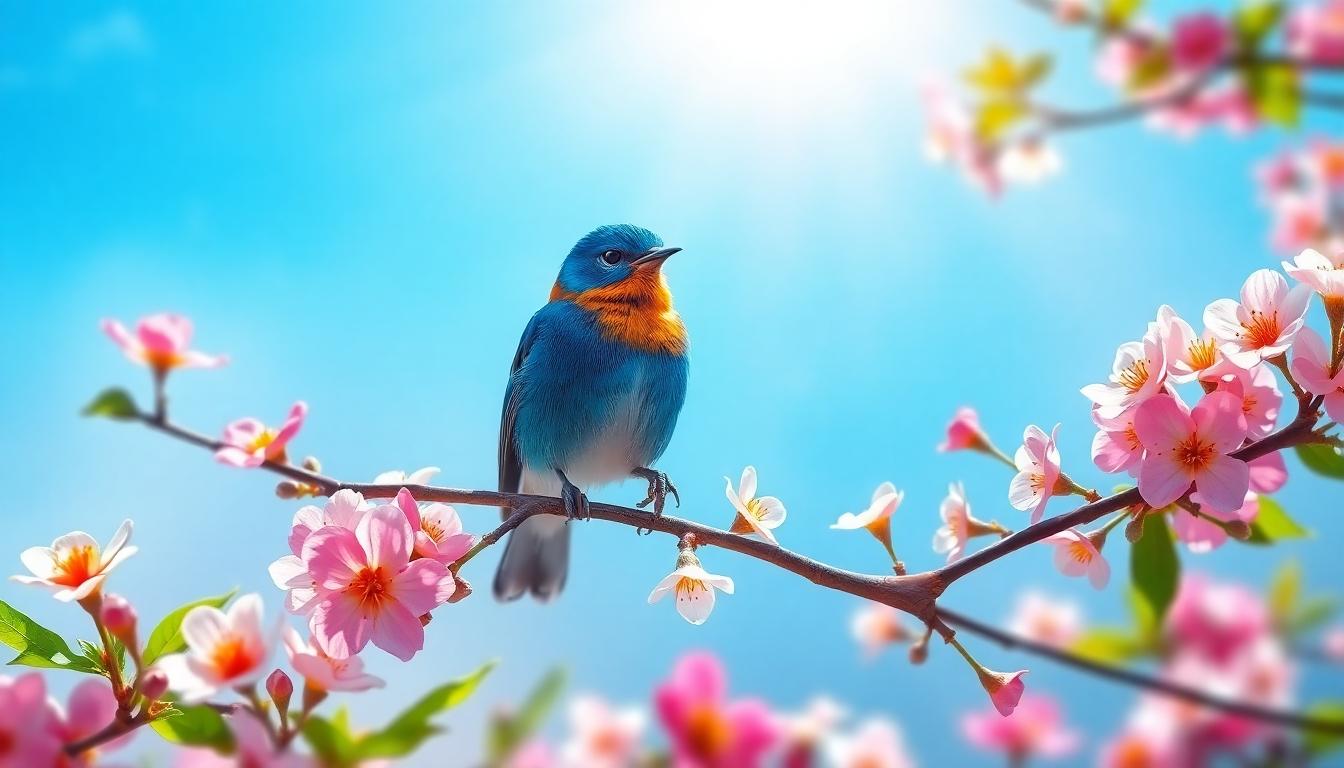
Bluebirds have established themselves as powerful symbols in creative expressions throughout history. Their vibrant presence in literature and art reinforces their associations with happiness, hope, and transformation across various cultural traditions.
Famous Literary References to Bluebirds
Maurice Maeterlinck’s play “The Blue Bird” stands as one of the most important literary works featuring bluebird symbolism, emphasizing these birds as representations of happiness and spiritual enlightenment. The musical “Anything Goes” includes the uplifting song “Be Like The Bluebird,” which leverages the bird’s positive symbolic connections to inspire audiences. “Somewhere Over the Rainbow” from “The Wizard of Oz” famously references bluebirds, cementing their association with happiness and dreams in popular culture. Russian folklore treats bluebirds with special reverence, portraying them as harbingers of spring and emblems of hope during challenging times.
Visual Arts and the Bluebird Motif
Artists frequently depict bluebirds as embodiments of joy and freedom in visual media, using their striking appearance to convey deeper meanings. Their vibrant blue plumage creates a natural connection to the sky, symbolizing boundless possibilities and the pursuit of happiness in Western artistic traditions. The Mountain Bluebird, with its particularly intense coloration, receives special attention in artistic representations due to its exceptional beauty and profound symbolic significance. Celtic folklore incorporates bluebirds as symbols of transformation and healing powers, adding another dimension to their artistic portrayal. Asian artistic traditions associate the bluebird with concepts of immortality and good fortune, while Native American art often depicts these birds as messengers bridging the gap between spiritual and physical realms.
Modern Interpretations of Bluebird Symbolism
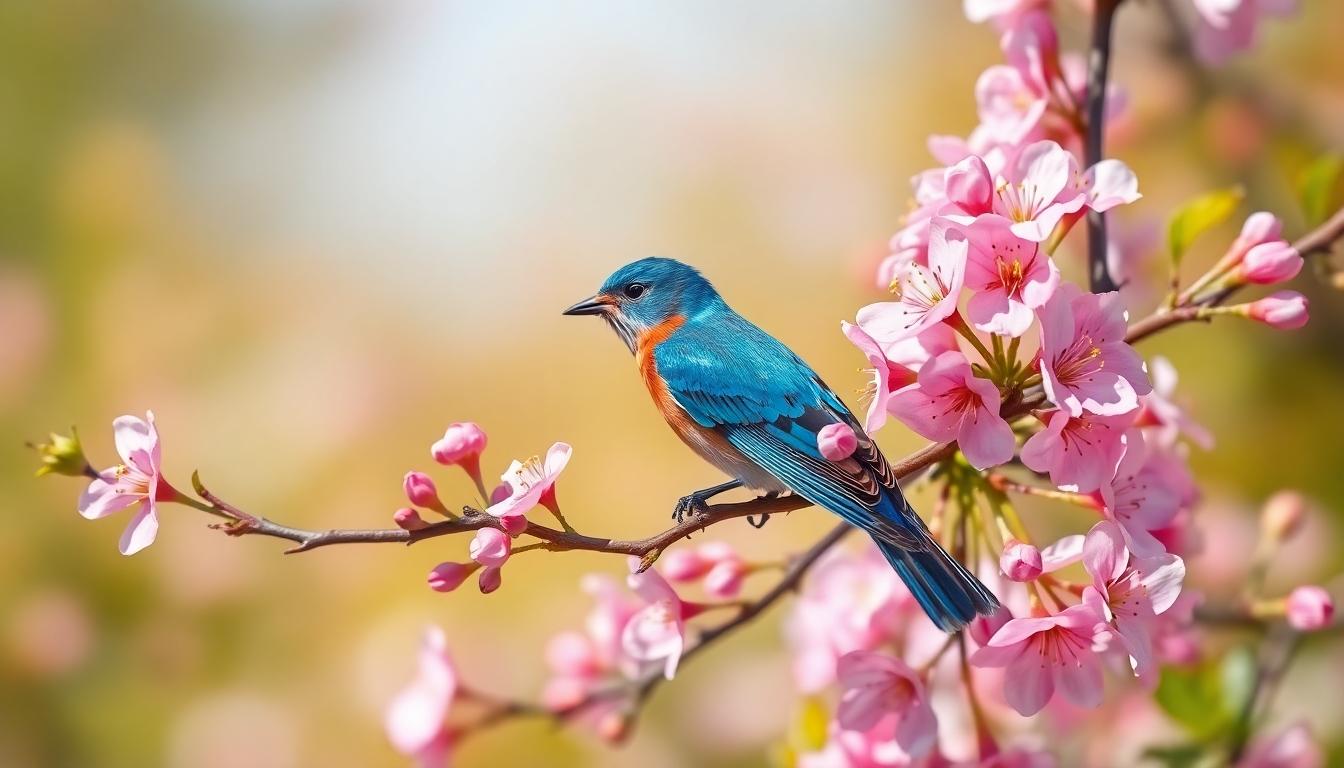
Contemporary interpretations of bluebird symbolism center around themes of joy, resilience, and spiritual connection. The bluebird’s vibrant blue plumage and melodic song have solidified its position as a powerful symbol of optimism and hope in modern consciousness.
Bluebirds in Contemporary Culture
Organizations across various fields adopt the bluebird as an emblem representing hope and transformation. Many artistic works feature these birds to symbolize happiness, particularly through the well-known “bluebird of happiness” motif that appears frequently in popular culture. Their distinctive appearance serves as a compelling metaphor for the pursuit of contentment and fulfillment in modern society. The seasonal arrival of bluebirds during spring connects them symbolically to new beginnings, making them popular subjects in contemporary literature and visual storytelling. Many creative works incorporate bluebird imagery to convey themes of renewal and fresh starts after periods of difficulty.
Personal Significance as Spirit Animals
As spirit animals, bluebirds encourage individuals to embrace joy and speak their authentic truth. Their connection to the throat chakra establishes them as symbols of genuine self-expression and emotional clarity in spiritual practices. Encounters with these beautiful creatures are widely interpreted as meaningful reminders to trust life’s journey, even through its challenges. Many spiritual traditions view bluebirds as messengers offering guidance during difficult periods, bridging the material and spiritual realms. Their bright coloration and uplifting presence inspire people to maintain optimism and seek deeper spiritual connections in everyday life. Spiritual practitioners often cite bluebird appearances as important moments that prompt reflection and renewed faith in positive outcomes.
Conclusion
Bluebirds captivate us with their profound symbolism across cultures and throughout history. Their azure feathers carry messages of hope joy and spiritual awakening that transcend time and geography.
When a bluebird crosses our path we’re reminded to embrace optimism even during challenging times. Their presence invites us to reconnect with our authentic selves and recognize the potential for transformation in our lives.
Next time you spot these vibrant messengers take a moment to appreciate not just their beauty but the ancient wisdom they embody. The bluebird’s enduring symbolism reminds us that happiness isn’t just a destination but a journey we can choose daily.
Frequently Asked Questions
What do bluebirds symbolize across different cultures?
Bluebirds universally symbolize happiness, hope, and renewal. In Native American traditions, they represent prosperity and protection. European folklore portrays them as metaphors for happiness and sacrifice, while Chinese symbolism links them to celestial messages and immortality. Across cultures, their vibrant plumage and cheerful songs consistently evoke associations with optimism, joy, and emotional renewal.
How are bluebirds represented in literature and art?
Bluebirds appear prominently in literature like Maurice Maeterlinck’s “The Blue Bird” and Cole Porter’s “Be Like The Bluebird” from “Anything Goes,” reinforcing their connection to happiness and hope. In visual arts, they embody joy and freedom, with their striking appearance symbolizing boundless possibilities. Russian folklore gives them special reverence, while Celtic and Asian artistic traditions use them to represent transformation, healing, and good fortune.
What spiritual meanings are associated with bluebirds?
Spiritually, bluebirds symbolize joy, optimism, and renewal. Their blue plumage represents divine connection and signifies good fortune and rebirth. Many spiritual traditions view bluebirds as messengers offering encouragement during challenging times. They’re associated with spiritual transformation, personal growth, and openness to new beginnings, inspiring reconnection with childlike wonder and authentic self-expression.
Why are bluebirds considered symbols of hope?
Bluebirds’ vibrant appearance and cheerful songs naturally evoke feelings of optimism. Psychological studies show that bluebird imagery elicits positive emotional responses. Their arrival in spring symbolizes renewal and new beginnings. Conservation success stories of bluebird population recovery reinforce their symbolism of resilience and hope. During difficult times, bluebird sightings are often interpreted as reassurance that better days lie ahead.
What does seeing a bluebird signify in modern interpretation?
In contemporary culture, seeing a bluebird is often considered a sign of coming happiness and positive change. It can represent a reminder to embrace joy and authentic self-expression. Many people interpret bluebird encounters as meaningful signs from the universe or prompts for spiritual reflection. Their appearance might encourage you to maintain optimism during challenges and trust in your life’s journey.
How do Native Americans interpret bluebird symbolism?
Native American cultures celebrate bluebirds for their songs that herald spring. They symbolize courage, self-acceptance, and prosperity. Bluebirds frequently appear in origin stories that reflect personal transformation. Many tribes consider them protective spirits that bring good fortune and guard against negative energies. Their blue color connects them to sky deities and the divine realm.

